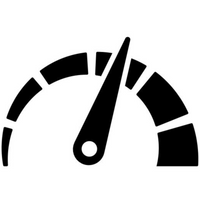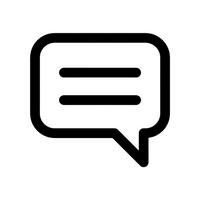At DRT Fabrication, we don’t believe strength comes from overbuilding with unnecessary weight. It comes from intentional design, engineering that delivers maximum durability, smart load paths, and real world function without adding hundreds of pounds to the front of your truck.
That philosophy is exactly what led us to develop the Hybrid Front Bumper for the 3rd Gen Tacoma. While most companies either go all-steel (heavy and fatiguing) or all aluminum (light but fragile), we chose a hybrid approach that blends the best of both worlds: DOM steel side wings and frame structure for strength, paired with a CNC bent aluminum center for weight reduction and easier access.
The result? A bumper that’s up to 35 lbs lighter than competitors full-steel versions, but still engineered to handle the punishment of desert pre-running, rock crawling, and recovery pulls.
Why We Use DOM Instead of HREW
One of the biggest differences between a DRT bumper and what you’ll find elsewhere comes down to tubing. Many companies cut costs by using HREW (Hot Rolled Electric Welded) tubing in their side wings. (Hint: If they don’t say DOM, it’s not)
The problem with HREW:
- Has a longitudinal seam—a natural weak point under bending or impact.
- More prone to fatigue when repeatedly stressed, exactly what off-road abuse delivers.
- In a frontal hit, HREW tubing is far more likely to bend, crack, or collapse along the seam.
We don’t cut corners. Our hybrid bumpers use .120-wall US DOM (Drawn Over Mandrel) tubing—seamless, consistent, and dramatically more resistant to bending forces like those from hitting a deer, smashing a rock, or taking a side load.
DOM costs more, but it delivers a bumper you can rely on when it matters.
Let’s Break It Down
HREW (Hot Rolled Electric Welded):
- Tensile strength: ~45,000–50,000 psi
- Yield strength: ~38,000 psi
- Weak seam > tends to crack or fold under repeated flex
- Bends easier, fatigues faster
DOM (Drawn Over Mandrel):
- Tensile strength: ~70,000–80,000 psi
- Yield strength: ~60,000–70,000 psi Seamless and uniform > strength is consistent around the tube
- Much stronger, more resistant to bending and cracking
- Superior fatigue resistance under repeated off-road abuse
Strength Difference in Plain Numbers:
- DOM has about 30–40% higher yield strength than HREW
- DOM has about 40–60% higher tensile strength than HREW.
Real-World Example:
- A HREW side wing may fold in after one solid hit from a rock or deer.
- The same size DOM wing usually holds its shape, absorbing and redistributing the force instead of failing.
That’s why DOM is standard for roll cages and chassis reinforcement, areas where failure isn’t an option. Using it in our hybrid bumper wings makes your bumper closer in durability to race chassis parts, while others cheap out with HREW.
The Bolt On Frame Support System: Fixing Toyota’s Weak Point
The Tacoma’s factory bumper mounts are notoriously thin and fatigue easily. Add the weight of a steel bumper and winch, and those mounts start to flex and crack over time.
That’s why we include a bolt-on frame support system:
- Bolts through the frame, then wraps around the front of the bumper mounts.
- Mounts perpendicular to the weak factory plates, providing lateral resistance.
- Prevents sagging, cracking, and long term fatigue of the mounts.
Without it, the weight of the bumper alone will eventually fatigue the mounts—even before trail abuse begins. This isn’t optional reinforcement, it’s the only way to keep your bumper locked tight to the chassis long-term.


The Pocketed Aluminum Center: Lightweight, Rigid, and Functional
Most competitors stick with a flat steel faceplate for the bumper center. It’s heavy, and ironically, often not that rigid. Flat steel flexes under impact.
We took a smarter approach. The ¼” 5052 aluminum center is CNC cut and bent into a pocketed design that adds rigidity across multiple planes.
Think of it like folding a piece of paper: flat, it’s flimsy but crease it, and it resists bending. The same principle applies here. The bends strengthen the aluminum far beyond what a flat sheet could offer, while the pocket geometry stiffens the entire bumper structure.

Other advantages of the aluminum center and steel pocket:
- Weight savings: the single biggest reduction in bumper mass.
- Improved access: the aluminum section opens up clearance for easy winch access.
This geometry allows us to replace what would have been a heavy steel section with lighter aluminum without compromising structural integrity.

Winch & Recovery Integration: Built-In, Not Afterthoughts
Other companies often fail to mention that their bumpers require a winch control box relocation adding time, cost, and hassle.
We engineered ours differently:
- Fits most 10k–12k winches without relocation (a minor grille support notch may be required).
- Recovery points: 1" thick CNC-machined steel, fully welded inside and out, stronger than the jagged laser cut plates many companies use.
- Optional bull bars don’t interfere with winch mounting or functionality.
Everything was designed to work together, from recovery pulls to long-term maintenance.

Steel vs. Aluminum vs. Hybrid: The Real Comparison
All-Steel Bumpers
- Strength: High
- Weight: Very high (hurts handling, suspension, and frame fatigue)
- Cons: Frame mount fatigue, unnecessary bulk
All-Aluminum Bumpers
- Strength: Moderate (lightweight, but not for repeated impacts)
- Weight: Low
- Cons: Bending, cracking, deformation under abuse; often “one-time use” in heavy impacts
DRT Hybrid Bumper
- Strength: High where it matters most (DOM wings + frame supports)
- Weight: Moderate (up to 35 lbs lighter than steel competitors)
- Cons: You won’t stop looking at your truck
With the hybrid design, you’re not compromising, you’re gaining.
The Bottom Line
The DRT Hybrid Front Bumper isn’t just a mix of steel and aluminum. It’s a bumper built on intentional design principles:
- Strong DOM tubing where impacts happen.
- Smart geometry that makes the entire bumper stronger.
- Bolt-on frame supports that fix the Tacoma’s factory weak point.
- Integrated recovery and winch design with no surprises.
It’s lighter, stronger, and smarter than the competition.
Because in the real world, a bumper isn’t just about looking tough. It’s about being ready for anything the trail throws at you.





